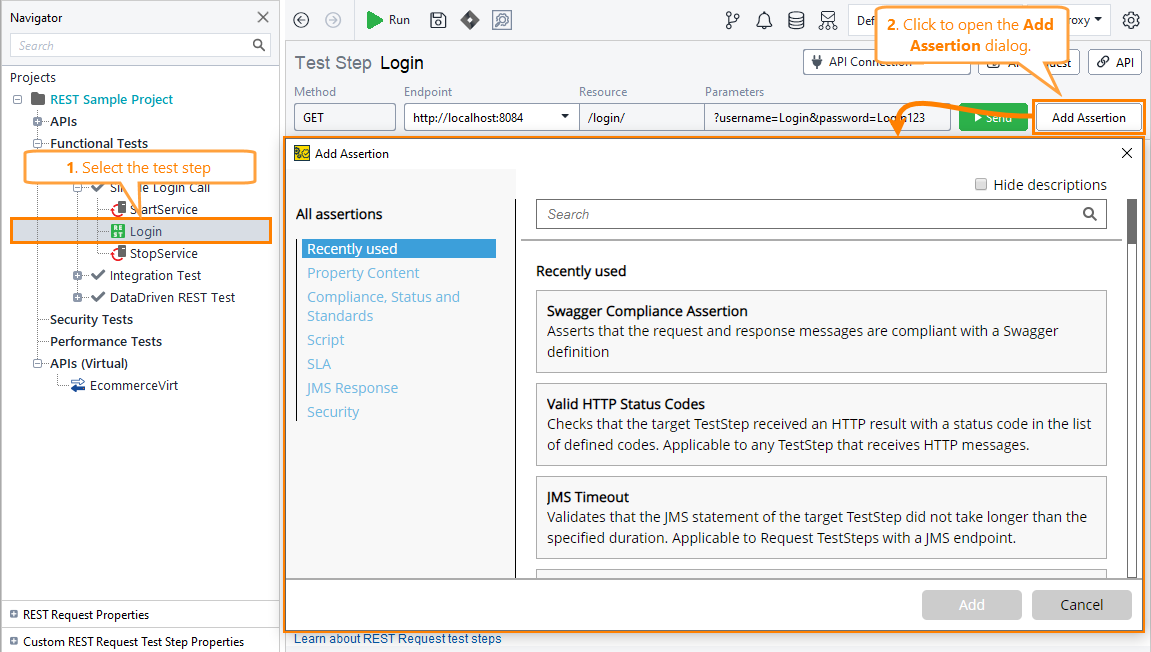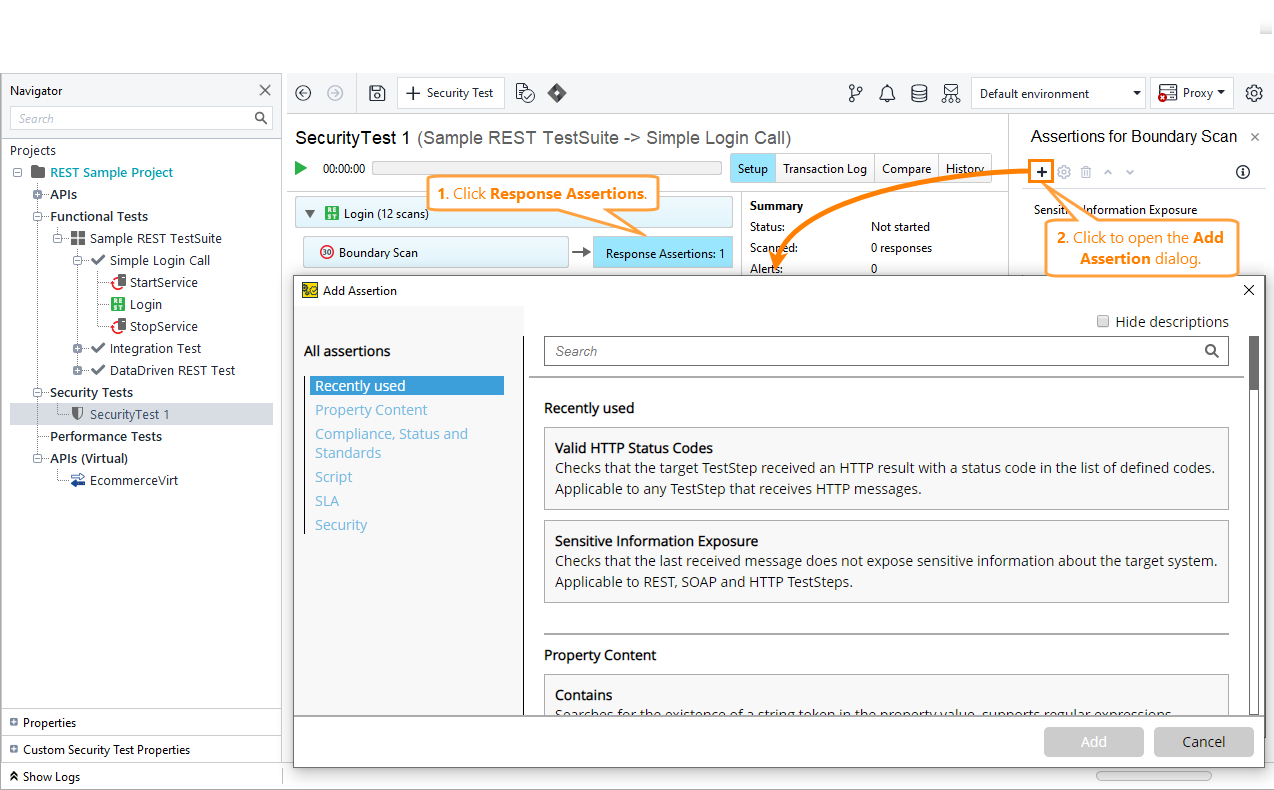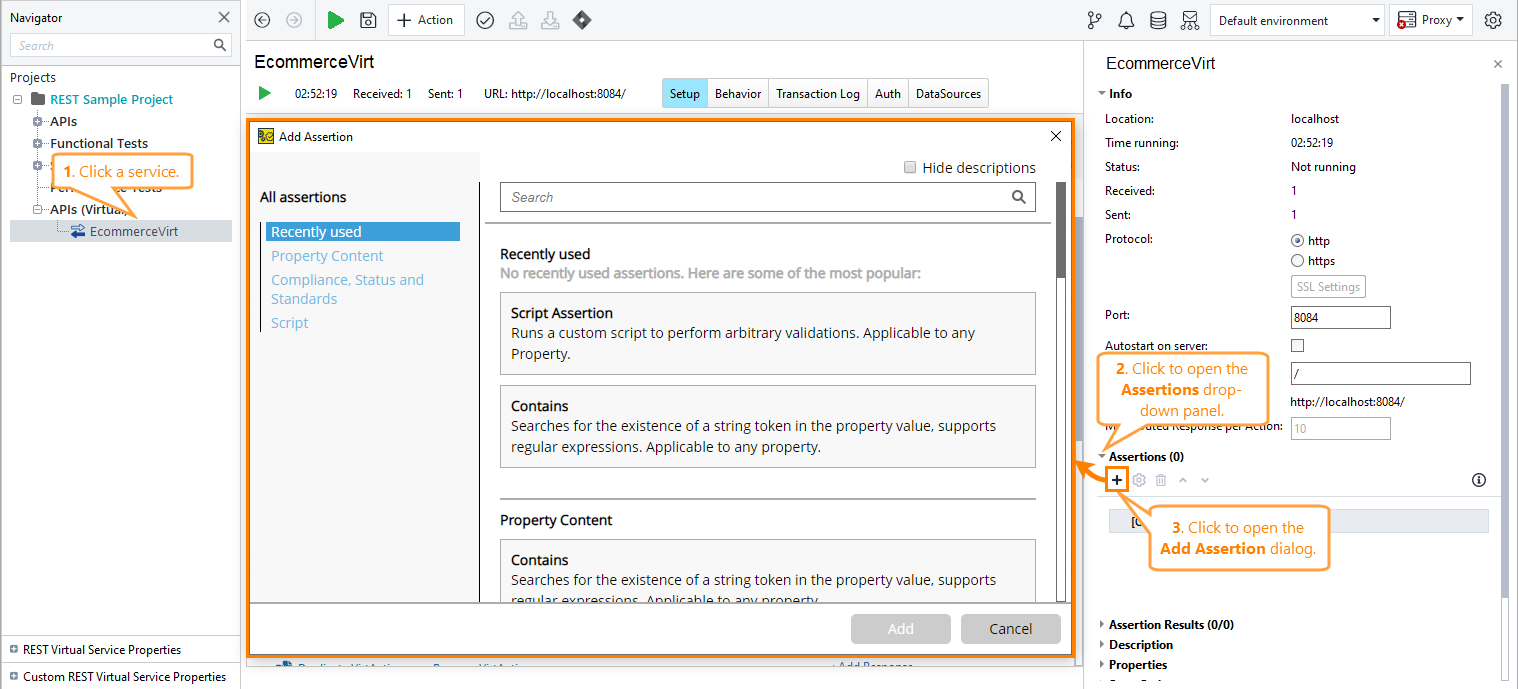Contains Assertion
The Contains assertion searches for text or contents matching a specific pattern in the request or response.
Important
To verify a fixed value without using patterns, use the XPath Match or JSONPath Match assertion.
Availability
This assertion is available in multiple ReadyAPI applications. Depending on the application, it validates the following data:
In... | Checks... | To learn more... |
|---|---|---|
The request or response contents. | ||
The response contents. | See Security Assertions. | |
The request contents. |
Create an assertion
Setting up properties
In the Content edit box, specify the value you need to find:

Use one of the following:
An ordinary string.
A regular expression.
Note
Make sure to enable the Regular Expression option.
To separate lines within a regular expression, use the
(?m)flag. Also, mark the beginnings of the lines with^and the ends with$.To learn more about the regular expression syntax, see the Oracle Documentation.
Expressions like
${#TestCase#CustomPropertyName}command the assertion to get the needed value from the specified property.To select such a property visually, simply right-click the edit box and select Get Data from the context menu. This will open the Get Data dialog box. Use it to pick the needed property:

Enable additional options if you need them:
Option
Description
Ignore Case
Ignore the content case during the search.
Regular Expression
Treat the value you have entered as a regular expression.
Note
In ReadyAPI, if you use Assertion Contains with an empty string (""), the assertion will pass because an empty string is always found within the response. This is expected behavior. Ensure your tests handle empty strings properly to avoid false positives.
The following regular expression gets all strings whose
Datevalue belongs to September 2014.<Date>2014-09-\d{2}T.{8}</Date>The following regular expression checks whether the response status was either 200 OK or 202 Accepted
<status>(OK)|(Accepted)</status>
Add more assertions for response and request contents:



